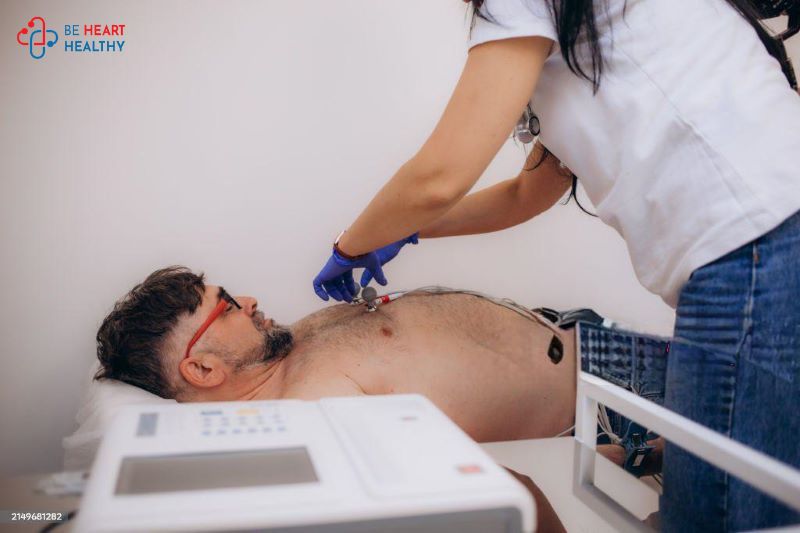What Is a Heart Attack?
The proper medical term for what we call a heart attack is “myocardial infarction.” It occurs when part of the heart does not receive an adequate blood supply to function properly. When a low blood supply continues for too long, the heart muscle undergoes irreversible damage resulting in myocardial death.
The most common cause for inadequate blood supply is the deposition of atheromatous plaques in the vessels that supply the heart. These plaques consist mainly of cholesterol. They can build up over time. As they get larger, they also become more unstable. This promotes blood clot formation. When a blood clot is formed, the occlusion reaches a critical level the heart muscle gets severely damaged.
If you get a heart attack, you will probably experience the worst pain you have ever felt in your chest. It will last more than a few minutes even if you rest and might be associated with symptoms like sweating, shortness of breath, nausea, vomiting, and a rapid pounding heart1.
You are at an increased risk of getting a heart attack if you already have diseases like hypertension, diabetes, and high cholesterol or if you smoke or consume alcohol1.
What Are the Treatment Options Available?
A heart attack is a medical emergency. Your heart muscle is literally dying. While there is no hope for the muscle fibers that have already suffered irreversible damage, if you act quickly, you can save the surrounding area and prevent further damage to the heart1.
There are two main strategies used in the definitive management of heart attacks: primary angioplasty and thrombolytic therapy. In primary angioplasty, doctors directly access the site of the occlusion using a guidewire. Then they forcefully widen it by squashing the atheromatous plaque against the vessel wall using an expandable balloon. Most of the time, a stainless-steel stent is placed inside permanently to make sure the artery stays open. This procedure cannot be performed by GPs; a cardiology consultant is necessary2.
On the other hand, thrombolytics are drugs that are given systemically to dissolve the clot blocking the blood supply to the heart.
Why Is It Better to Go for Angioplasty?
Initially, angioplasty was introduced as a rescue strategy for instances that conventional thrombolytic therapy had failed. But extensive research and the development of safer techniques have resulted in primary angioplasty replacing thrombolytics as the first-line treatment modality. However, this does not mean that thrombolytics have been discarded and not used anymore1,3.
A heart specialist doctor will choose treatment according to guidelines published by various academic bodies like the American Heart Association. They consider the time since the occurrence of the heart attack, medical comorbidities of the patient, and availability of facilities. In the presence of facilities, the first choice is almost always primary angioplasty. Thrombolytics are recommended in late presentations or when the hospital does not have the facilities to perform primary angioplasty and the closest heart center is too far away3.
Studies have shown that both short-term and long-term mortality rates are lower with primary angioplasty than with thrombolytics. The commonest complication of thrombolytic therapy is bleeding. About one-fourth of the patients experience minor bleeds. In about 1% of the patients, bleeding into the cranial cavity can occur and this can lead to worse outcomes than the heart attack itself, even death. Due to this reason, there are absolute and relative contraindications for thrombolytic therapy, which limits its use in all patients. Primary angioplasty, on the other hand, has fewer contraindications3–5.
Successful angioplasty also reduces the risk of the same artery getting occluded again, thus preventing reinfarction and maintaining your heart health. Stenting is now done in place of coronary artery bypass grafting when possible due to the minimal invasiveness and quick recovery1,5.
References
- Heart Attack | Johns Hopkins Medicine. Accessed August 22, 2021. https://www.hopkinsmedicine.org/health/conditions-and-diseases/heart-attack
- Primary angioplasty for a heart attack.
- Switaj TL, Christensen S, Brewer DM. Acute Coronary Syndrome: Current Treatment. Am Fam Physician. 2017;95(4):232-240. Accessed August 22, 2021. www.choosingwisely.org.
- Widimsky P. Primary angioplasty vs. thrombolysis: the end of the controversy? Eur Heart J. 2010;31(6):634-636. doi:10.1093/EURHEARTJ/EHP535
- Zijlstra F, Hoorntje JCA, de Boer M-J, et al. Long-Term Benefit of Primary Angioplasty as Compared with Thrombolytic Therapy for Acute Myocardial Infarction. http://dx.doi.org/101056/NEJM199911043411901. 2008;341(19):1413-1419. doi:10.1056/NEJM199911043411901



